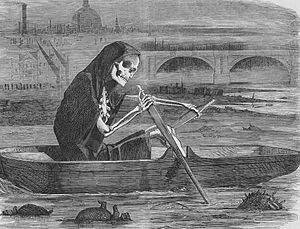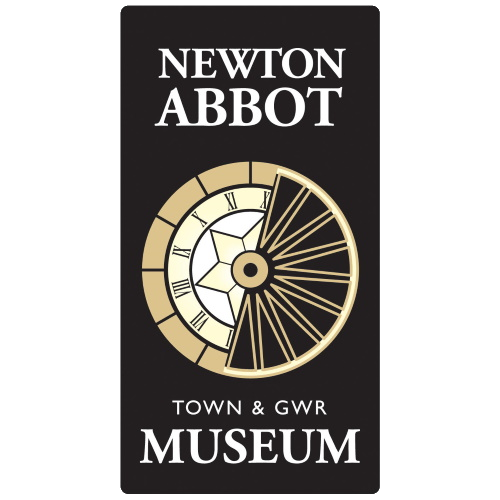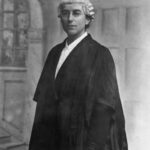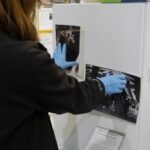
1858 the Year of the Great Stink – Newton Style
- by naadmin337
- in Museum
- posted May 29, 2019
The Great Stink was the elegant name given to terrible smell that pervaded central London, during July and August 1858. It had been a particularly hot summer, which exacerbated the smell of untreated human waste and industrial effluent present on the banks of the Thames. This wasn’t a new problem; it had been getting worse for years and was due to an inadequate sewage system that emptied directly into the Thames. As the newly built Houses of Parliament were getting the full impact of the smell, they acted quickly to agree plans for a new sewage system.

“The Silent Highwayman” (1858). Death rows on the Thames.
It is not known if the outcry in London triggered a letter that appeared in the Western Times 23rd October 1858 from a Mr C.B. Hall of Lansdowne Villa but it certainly sparked a reaction in Newton Abbot. The letter’s title made it a must read-“The Nuisances and Abomination of Newton Abbot”; especially as Newton had previously been lauded as one of the healthiest towns in England
But C.B. certainly had a point.
He noted that the River Lemon was partially diverted to provide water for the Corn Mill and the Tanning Works; the latter then dumped their stinking detritus back into the Lemon, which was made worse in the summer months, when the only water in the Lemon came from the Tanning Works. In addition about 30 sewers and drains also dumped raw sewage, including blood and waste from slaughter houses, into the Lemon. “Leaving filth streaming down the walls and great heaps of abomination on the bed of the Lemon, poisoning the atmosphere of the most populous part of the Town and rendering the passage of public thoroughfare very offensive”.
He goes on to say that these “nuisances should be enough for a population of 5000, but no this is far from the case. The Baptist Chapel in East Street are interring bodies near the street, there are three tallow melting establishments, which stink most awfully, a Tripe and Trotter Boiling House adjoining the Chapel, giving forth its savoury perfume for the edification of the Chapel goers. There was also the immense volumes of smoke, vapour and gas of the most offensive and sickening nature, issuing constantly from the chimney of Refuse Tan consuming furnace in Newton Bushel, spreading its disgusting effluvia through the streets, shops and houses in this Town and extending its influences to at least 3/4 of a mile. The drinking water supply is deficient in both quantity and quality.”
C. B. had a personal nuisance gripe, with one of his neighbours, who happened to be an Inspector of Taxes, who began making bricks in his back garden, which included firing the bricks and generating vast volumes of black coal smoke.
Some of this may have been overstated, but the criticisms of his letter came from those who had a vested interest in the polluting businesses, or who lived well away from the river in the smarter parts of town.
A certain W.L. (Name not given) posted a long letter the following week lambasting C.B. Hall with a mixture of derision and scorn. He dubbed C.B. Hall as “Carl Bamboozle all” and included in his letter the script of a poster that had been displayed around the town, earlier in the week. (Some of the wording in the poster is no longer acceptable, but the following is its gist)
‘Hollo, Hollo. Carl Bamboozle all, the Great Panjandrum (a know-all) will make his first appearance before a Newton audience on 5th November by the Tower.
He will eat a donkey, but as he doesn’t own a donkey he will grab the first one he comes across.’
News spread quickly and a large crowd assembled at the Tower, when it was reported that the unpopular Carl Bamboozle was to be burnt as an effigy. The proceedings began with the Town Band starting from the top of Wolborough Street playing “Oh dear what can the matter be”, followed by torch Bearers, then two donkeys in mourning for their departed friends. The procession continued around the streets of both Newton Bushel and Abbot, proceeding to C.B. Hall’s home were they halted, until C.B. came out and he shouted “Newton for ever”.
C.B’s effigy was burnt and the donkeys were returned to their stables.
The following day C.B. went around the two towns removing “The Great Panjandrum” posters.
In 1858 the Tanning process was a “noxious and odiferous” trade. Chemicals were not available, so urine and dog poo or animal brains were used. The raw hides, which were bloodied and wet with animal remains that still clung to them, were cleaned by soaking in water. They were then transferred to tanks of urine, to make the hides pliable enough for men to scape the hides clean. Finally to achieve the sheen of fine leather, the hides were soaked in a dog poo or sometimes animal brain solutions, and then washed with clean water.
All this waste water was then discharged into the Lemon.
It was argued by some who criticised C.B. that in the summer months when the Lemon was at low ebb, the washings from the Tannery cleared the “abominations” from the river bed. Trouble was the “abominations” were being cleared with urine and dog poo solutions.




